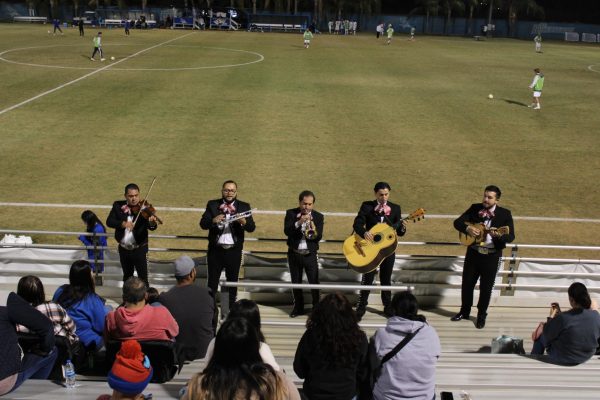Teach the teachers: Time to help faculty master Canvas
April 29, 2020
Canvas is only as effective and user-friendly as the faculty are capable of making it. The move to Canvas is a step in the right direction, but faculty who do not understand the technology make classes more difficult for the students. How can professors assume to run a class online when they are barely proficient in the use of the software that is provided? Overall, our campus faculty is not prepared for online education.
This semester, CSU Bakersfield faculty and students were not given an option. The entire school transitioned to online instruction because of the coronavirus pandemic. The downside was that this happened while the campus overall was in the final stages of a pilot program for a new online learning platform.
Many students are now faced with using not one, but two different systems: Blackboard, which has been used by CSUB for a number of years, and the piloted program, Canvas. The abrupt transition to online education exposed the weakness of many of our faculty, as many were not able to switch quickly to online learning systems, regardless of whether it was Canvas or Blackboard. At the end of the pilot program this semester, CSUB decided to make the switch to Canvas and say good bye to Blackboard, which could not bode better for the future of online education.
In polls conducted by The Runner, there were students who preferred Blackboard, but many of them admitted to never using anything else.
Blackboard looks and feels like outdated software. Most of the screens look like they belong on a mid-90’s IRC host page, and the mobile app is severely limited. Often, a message will appear on Blackboard’s mobile app stating “Use Desktop Browser. We can’t open this assessment in the app. Please access your course on a desktop web browser to open the assessment.” Mobile devices, especially tablets with a keyboard attachment, should be able to function nearly identical to a desktop or laptop computer.
To give an example of the outdated nature of Blackboard, one particular professor who taught courses on Blackboard recorded a series of lectures. This professor posted all the lectures on the same page for students in their class to access. When a student opened that page, all the audio files would begin to play at the same time. To access the proper lecture, a student had to repeatedly stop the recordings until Blackboard stopped trying to auto-play them.
Blackboard is falling behind in the ever-changing digital world. There is one function Blackboard possessed that brought in faculty support which Canvas lacks, which is the ability to randomly sample from a group of questions for tests and quizzes.
Nevertheless, Canvas has come out as the victor, and Blackboard will be phased out by next fall. Blackboard has already been completely phased out of community colleges in California. Transfer students enrolling at CSUB are already familiar with Canvas, making their transition to a four-year college much easier.
Faculty need to be trained on how to properly use any learning management system if it is to be effective. The I.T. department offered many training sessions for Canvas; however, they were all voluntary. Faculty were not required to attend any of the training to use Canvas, which resulted in minimal attendance. Not only is training on the software to facilitate the classroom necessary, but basic skills in video and audio recording, the use of Zoom for meetings, and developing effective visual presentations are essential as well.
The administration and the Academic Senate need to take responsibility for educating all faculty members in the use of Canvas so students and faculty can get the best possible experience from online instruction. Public schools require teachers to participate in development training regularly. Institutions of higher education should hold the same standards; preferably higher.
Stipends are used to encourage faculty to attend voluntary training sessions. However, there is no mandatory requirement for any of these trainings. Due to the nature of the contracts employed, there is little the administration can do if a non-mandatory training session is missed. The system we have in place has created a scenario where students are required to buy books, attend class, and generally be ready or they will fail, but the faculty are not required to be ready to teach.
After the pandemic has resolved and the campus is opened, it is likely that there will still be a high demand for online instruction. The administration needs to find a balance between requirements and stipends to fully prepare faculty for online instruction. Sam Walton once said “You can’t just keep doing what works one time, everything around you is changing. To succeed, stay out in front of change.”
The coronavirus pandemic will permanently change the way we view the traditional classroom, and CSUB students, faculty, staff, and administration need to be prepared for that change as well.







